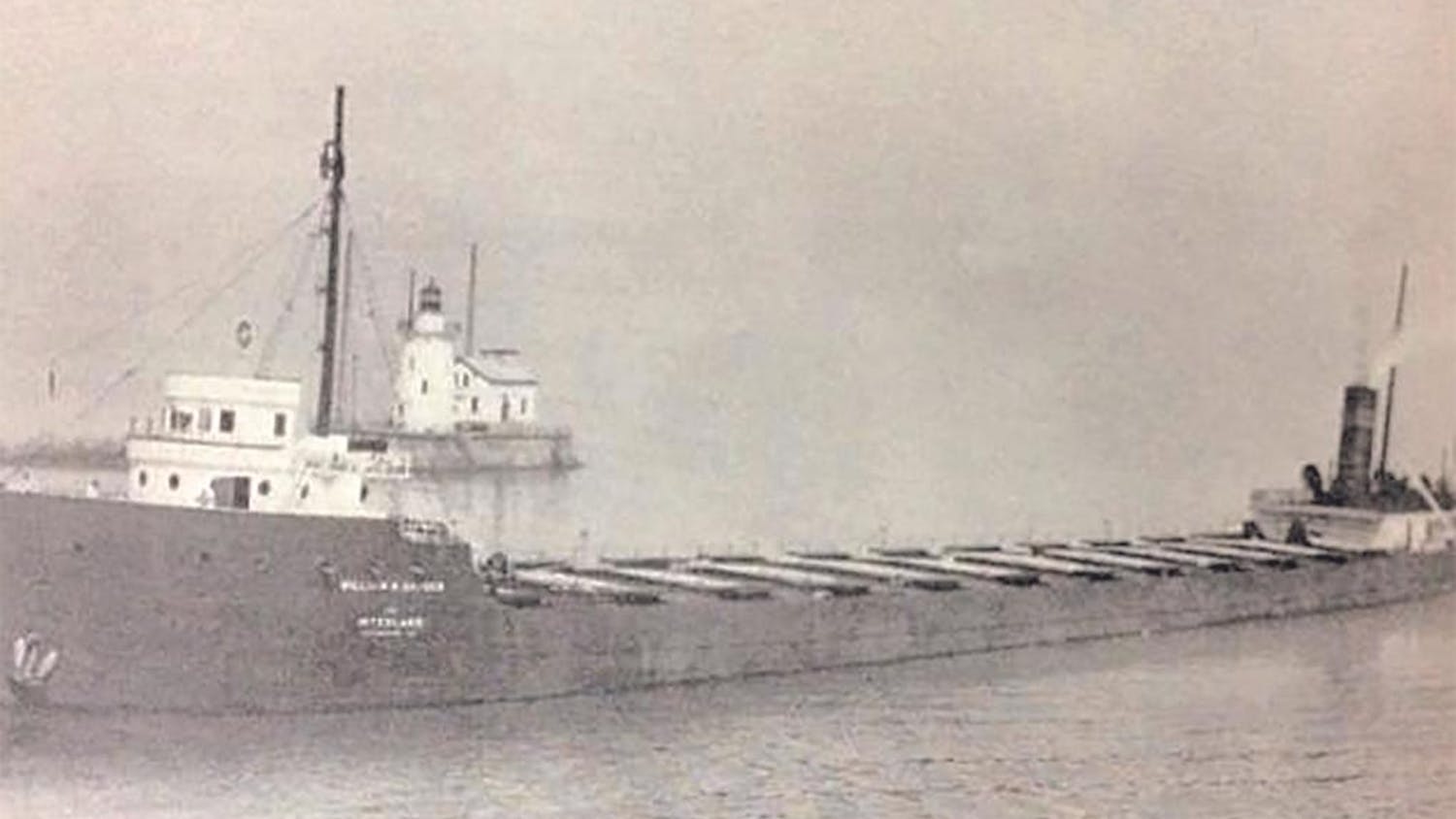Following two weeks of postcards, The 1306 is back with another exploration of our county’s history. I wanted to do my due diligence with this one, as, if you’ll recall from my introduction back in May, art history is my “thing.” Luckily, there’s a multitude of wonderful artisans of West Michigan, and many readers may recall today’s topic, especially if their childhood was spent frequenting Pentwater: Henry Carter Johnson’s “Glass Menagerie.”
Henry Carter Johnson was born in 1908 and raised in Detroit. He had no formal arts education, but received lessons while working as a janitor for Detroit painter and muralist Robert Herzberg at the Detroit School of Fine and Applied Arts - which saw the education of many southeast Michigan artists of the 1920s and 30s.

During the Great Depression, Johnson lived in New York City, his only place of residence outside of Michigan, and created art for the WPA’s Federal Art Project. This project saw the employment of tens of thousands of artists, assigning them work ranging from works on canvas to murals to theatre decoration. Johnson’s WPA work consisted primarily of landscapes, many of which capture the spirit of the Midwest in the 20th century - sprawling farmlands marked with hints of Rust Belt industrialization.
Through this support, Johnson was able to purchase a farm of about 80 acres outside of Hart in 1939, but world-changing events again saw his artistry utilized elsewhere. In 1943, he was drafted, and Johnson found himself in the Pacific Theater of WWII. Already in his mid-30s, he played his part in the war less through combat and more in the implementation of his artistic abilities, primarily medical illustration and photography.
Once the war ended, Johnson returned to Michigan to make his own art. This is when he started experimenting with glass. Johnson always had an interest in the medium, particularly in the creation of small glass figurines, which he commonly collected while traveling. These figurines were an art known amongst Czech and German artisans, and one that Johnson found little guidance on. There were no books on the subject, nor classes he could take, so Johnson taught himself. Through trial and error, he was able to replicate the European works, build up a collection, and began selling the figurines wholesale.
Johnson’s figurines ranged a wide scope. His most plentiful and popular variety were the scores of animals - dubbed “critters” - he could reproduce: delicate families of deer, sinuous snakes, colorful fish, graceful cranes, chubby-cheeked bunnies - the list goes on. There were human likenesses as well, mostly long-limbed ballerinas and acrobats, as well as a veritable garden of flowers.
In an article found in May 1957’s edition of "Popular Mechanics" magazine, Johnson explained his process and the challenges that came with it. The figurines were molded from thin, colored glass rods, which, when heated, he described as having the consistency of “thick molasses.” The source of heat was a cross-fire burner, and the rods were heated (sometimes to temperatures as high as 3,000 degrees) and molded in the center of the two flames. It’s no surprise that Johnson received plenty of burns in the process, especially during his self-teaching journey. You’d expect that once you finally get the glass to its melting point, the hard part is over, right? Nope, that’s where the troubles begin. Different colors of glass melt at different temperatures, and many will discolor if the temperature is too high or if reheated. Johnson found there was a limited amount of color combinations he could produce and had developed processes for the creation of each figurine so as to ensure the relative consistency of each product. Small “critters” could take as little as an hour to make, while larger and more elaborate pieces could take the whole day. Aside from vases, the glass was never blown and figurines were never painted.
Johnson carried on making and selling his figurines wholesale for a time, until his fellow glass artisans advised that he’d do better business if he had a storefront where customers could observe the process. In 1952, Johnson set up shop at Bailey’s Hardware in Pentwater. His station was at the back of the store - we today would recognize it as part of Gustafson's - with a little window through which folks could watch him work.

His business was originally called “Fine Miniatures in Glass,” but was referred to by the more whimsical name of the “Glass Menagerie,” and it quickly became a hotspot for tourists and locals alike in Pentwater. There is no lack of stories of children with their faces pressed up against the window, watching with rapt attention as black and white penguins formed before their eyes, pocket change clutched in their hands as they picked out which “critter” they’d take home.
Speaking of prices, Johnson’s figurines were quite affordable, even by the standards of the 50s and 60s, ranging from a quarter to $3.50 depending on the size and intricacy of the work.
In 1968, Johnson operated “The Glass Menagerie” out of Birdland variety store (next to where Good Stuffs is today) before moving to Ferry and working out of his home there throughout the 70s and 80s, where he still received visits from curious customers. Even throughout the operation of his physical storefront, Johnson still produced wholesale figurines, which were sent to and sold at the Corning Glass Center (now the Corning Glass Museum, a renowned destination for glass enthusiasts).
Johnson died in 1996 in Flint, Michigan. His third and final wife, Ruth Totten, donated a collection of 138 miniatures to the Henry Ford Museum, which can be viewed through their online collection and are occasionally rotated through the museum’s display cabinets. One of his WPA-era paintings, titled Winter Landscape, has a home in the Smithsonian’s collections. But luckily for us, the Pentwater Historical Society has a substantial collection of his figurines, as well as a painting of Pentwater Beach, on display. It's a fitting place for the town’s beloved artisan.













